Examining the Google Mini
The Mini itself is actually your run-of-the-mill 1U server, with the chassis painted blue.

The front of the machine features both the front mounting hardware as well as an exposed grill for ventilation.

Click to enlarge.
Although it is tough to see from the picture below, behind the grill is a fully functional CD-ROM drive that you can’t (and aren’t meant to) access without taking apart the machine:
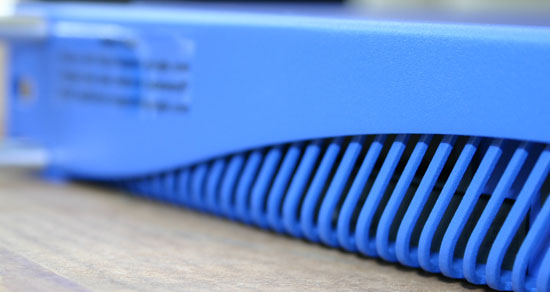
Behind this grill is a slim-line CD-ROM drive, not meant to be used by the user.
Looking at the rear of the machine, you get a better indication of what the Google Mini actually is (hardware-wise):

You see two PS/2 ports (keyboard/mouse), two USB ports, a parallel port, a serial port, VGA output, two Ethernet ports (color-coded to match the cables) and a single slot cover.

The two Ethernet ports are color-coded to match the cables provided with the Google Mini.
Getting Inside the Mini
It’s very clear that Google doesn’t want you playing around with the innards of the Mini as most of the screws have no usable head:

The grey screw above the rightmost Ethernet port features no usable head. Luckily, removing the screw only requires a little patience and some pliers.

The screw is threaded - it just can’t be undone with a regular screwdriver.
The mounting brackets are attached to the Mini using regular screws, so those can be installed/removed without any trouble. Once you get the screws off of the back of the Mini, there’s one last step to getting inside the unit.
The top of the Mini is actually one large piece of plastic with adhesive on its back that not only makes the unit look better, but also acts as another safeguard against curious users gaining access to the internals of the machine. Peeling back the front edge of the top breaks the adhesive and allows us to slide off the front cover.
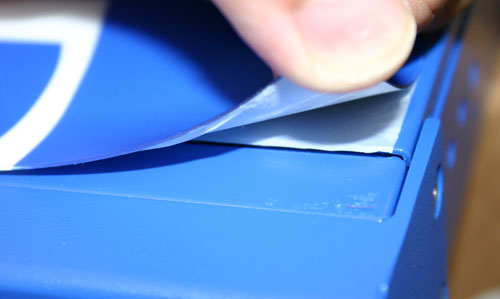
With the cover off, the internals of the Mini are no different than your standard 1U server. There are three drive bays and a large shroud channeling air to the processors underneath.
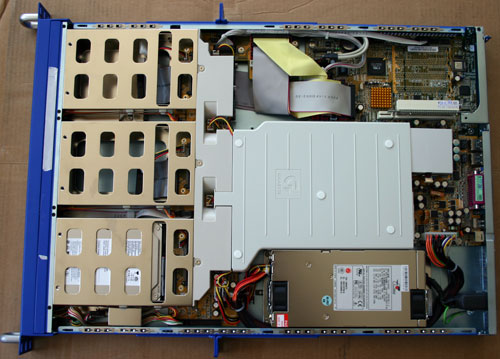
Click to enlarge.
A closer look at the fan shroud tells us the original manufacturer of the server, Gigabyte:
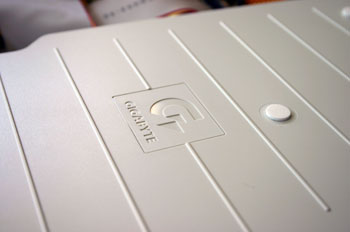
Removing the shroud reveals a pair of processors and the rest of the motherboard. The motherboard, like the server, is manufactured by Gigabyte:

The CPU heatsinks themselves also carry the Gigabyte brand:
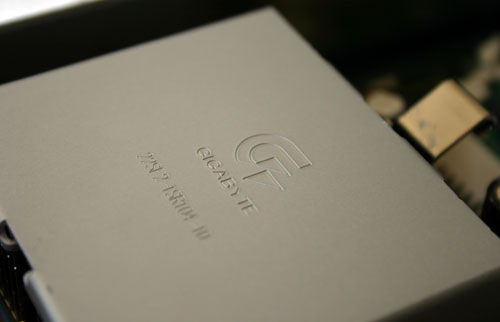
The heatsinks have no fans on them. Instead, they rely on the chassis fans and the fan shroud to remove heat from them.
We were curious to see what was under those heatsinks, so of course, we pulled one off:
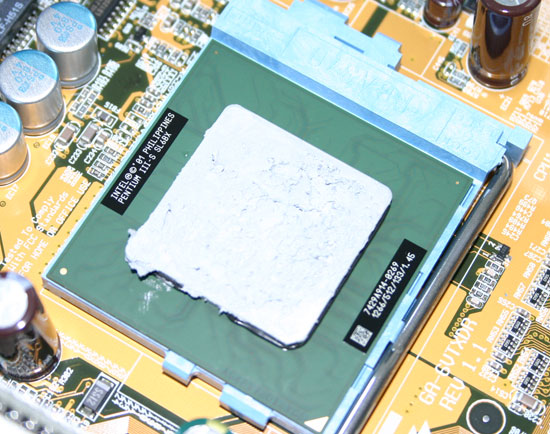
The Google Mini uses a pair of Pentium III-S processors running at 1.26GHz. It’s been a while since we’ve seen these used in a server, but they are most likely more than enough for the job at hand.
The motherboard features a VIA chipset, as is evident by the VIA South Bridge pictured below:
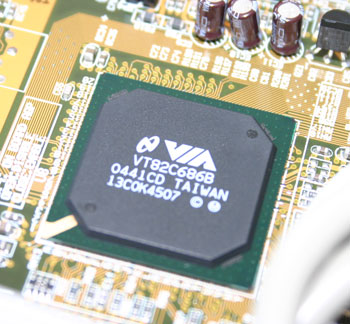
All of the drive bays in the server feature PATA interfaces and are handled directly by a Promise IDE RAID controller:
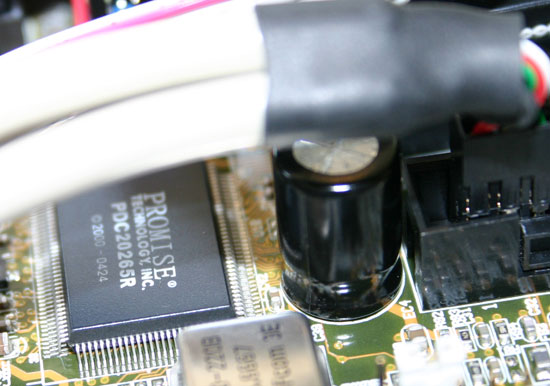
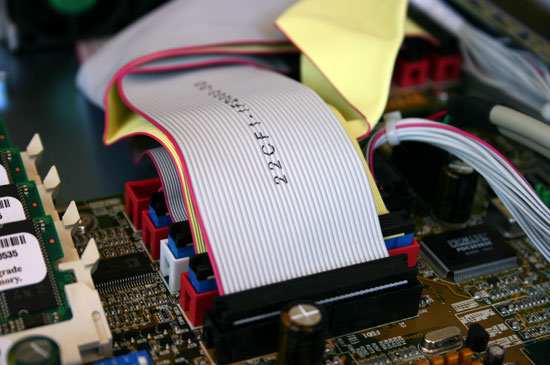
The system shipped with a single hard drive, a 120GB Seagate Barracuda 7200.7.
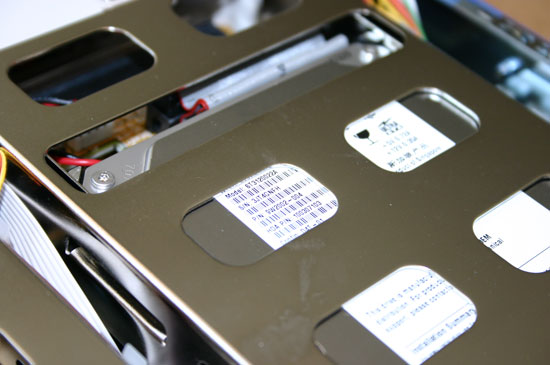
The Google Mini ships with 2GB of PC133 SDRAM (4 x 512MB sticks); interestingly enough, the memory uses Micron chips and is labeled as Dell memory.

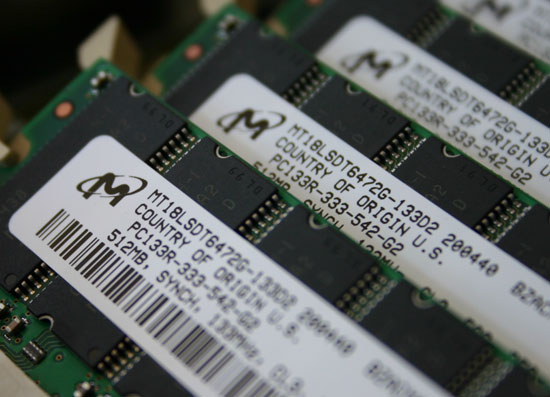
Powering the system up reveals a normal AMI BIOS, but of course, entering the BIOS is password protected - and you’re not given the password.
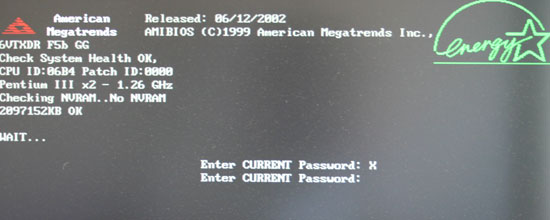






























48 Comments
View All Comments
bellwether - Thursday, November 29, 2007 - link
This is a great starting point for search for small businesses. Google's algorithm is effective, but the problem is that the result page sends the user to the Google Mini itself (so they leave your website), and it is in Google's format. XSLT is supposed to help you modify this, but doesn't do that good of a job.This http://www.components4asp.net/GoogleMini/">custom google mini website search page has something for ASP.NET that lets you add in image thumbnails to the search result and integrate the search into a regular ASPX page that's part of your website. Plus, there's a 30 day free trial. Definitely worth taking a look at.
fzkl - Saturday, September 10, 2005 - link
The dell memory is probably used because it has life time warranty.mini - Friday, September 9, 2005 - link
What is the OS used in the Google Mini?Could you please post more administration snapshots?
Tks
Eirikur - Friday, September 9, 2005 - link
I suspect some of your problems with the Full Text Search feature of SQL server might be related to how it breaks text into words and sentences. The word breaker will break by punctuation which is horrendous when it comes to version numbers. The word breaker will look at a version number like "2.0" and decide that "2" and "0" are two separate words in different sentences. Then it will throw both away since it ignores single letter words. In a version number like "2.82.1" only "82" will get indexed.jberry - Wednesday, September 7, 2005 - link
Does anyone know how the Google mini counts the 100K page limit with dynamic websites??fishy - Wednesday, September 7, 2005 - link
So...When are going to overclock this thing?
ok, just k/d....
PassMark - Tuesday, September 6, 2005 - link
There are much cheaper solutions around that you can run on your existing hardware and have similar performance without a limit of 100,000 pages.e.g.
The http://www.wrensoft.com/zoom/">Zoom Search Engine for $99
http://www.wrensoft.com/zoom/">http://www.wrensoft.com/zoom/
Brickster - Tuesday, September 6, 2005 - link
I imagine there are certain documents that you would want only certain users to have access to. How do you control access to the documents that Google has indexed? Does it just return everything despite and document-specific, access security policy?Verdant - Tuesday, September 6, 2005 - link
hence why the pricetag on the big brother is next to useless imho...i can't see anyone using anything besides the mini for indexing something like a website, for knowledgebases and the like you need a lot more than just a way to search.
Brickster - Wednesday, September 7, 2005 - link
Dude, you should see our company. A full featured search engine alone based on Google would do wonders for our cess pool of organization that is our intranet and file servers. For some, that is enough.